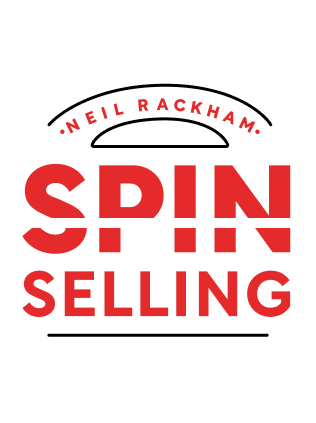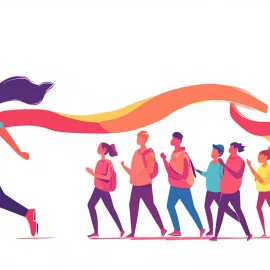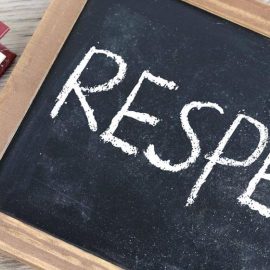

This article is an excerpt from the Shortform summary of "Spin Selling" by Neil Rackham. Shortform has the world's best summaries of books you should be reading.
Like this article? Sign up for a free trial here .
Do you want to know what makes a good salesperson? Can the SPIN strategy help?
Your quest to finding out what makes a good salesperson can drive you to find great sales opportunities and strategies. As you learn what makes a good salesperson, you’ll be able to experiment with different approaches. One of these is the SPIN strategy. Keep reading to see it works, and for tips on using SPIN successfully.
What Makes a Good Salesperson? Questions Drive Success
When you ask yourself what makes a good salesperson, the SPIN selling Questions are crucial to success in many types of interactions besides sales—for instance, negotiations, management interactions, performance interviews, and group discussions. The more questions you ask, the more likely you are to meet your objectives.
There are different types of questions, some of which are more effective than others. Sales training has emphasized two types—open and closed questions—dating back to at least the 1920s.
Closed questions are directive and usually elicit a “yes” or “no” answer—for example, “Have you purchased new equipment in the last five years?” Closed questions are less engaging, which can make them useful in dealing with long-winded customers, or when you have little time. What makes a good salesperson depends on your ability to deal with all kinds of customers.
Open questions are non-directive and encourage an in-depth answer—for example, “Can you tell me more about your business?” or “What’s your biggest concern?” They’re effective at eliciting information because they get the customer talking. Sometimes, you learn something you didn’t expect.
However, the research on which this book is based found no correlation between using either open or closed questions and sales success. Researchers found no benefit for one type over the other in major sales calls, although sales training has long emphasized the importance of asking mostly open questions instead of closed questions.
A Better Approach
Researchers found that successful reps handled the investigating stage differently. Rather than focusing on asking open and closed questions in large sales, they asked four different types of questions in a sequence. These successful reps’ investigating questions can be described as the SPIN sequence, which can help you learn what makes a great salesperson. Here’s an overview:
1) S-Situation questions: Start by asking fact-finding and background questions, such as
“What do you see as the company’s biggest growth opportunities?” Asking too many of these questions can impose on the customer’s time and patience, so use them judiciously.
2) P-Problem questions: Once you understand the customer’s situation, ask questions that explore problems or issues your product or solution can solve—for instance, “Are you concerned about meeting your clients’ quality standards with your aging equipment?” Less experienced reps may not ask enough of these questions.
3) I-Implication questions: Asking good situation and problem questions may be enough to win a small sale. However, you need to go further in large sales and ask a more sophisticated question that explores the implications or ramifications of a customer’s problem—for example, “How will this affect your fourth-quarter results?”, or “What will this mean for your biggest customer?” The point is to underscore a problem’s significance, and create a sense of urgency for solving it. These are more difficult questions to frame, even for experienced salespeople.
4) N-Need-payoff questions: These questions lead the customer to articulate the benefits of your product or solution. For example, you might ask, “How useful would it be if we could increase your output by 10%?”, or “How would being able to reduce errors help you?” Need-payoff questions contribute strongly to sales success. Top reps ask these questions 10 times more often than average reps.
Asking SPIN questions is the best way to use the investigating phase of a sales call.
Implied and Explicit Needs
There are two types of needs: implied and explicit. In small versus large sales, they play out differently. You’ll need to learn both to know what makes a great salesperson.
- Implied needs are problems and frustrations expressed by the customer—for instance, “I’m not happy with the quality our press is producing,” or “Our system creates too much waste.”
- Explicit needs are strong wants or desires expressed by the customer—for example, “We need a more efficient system,” or “We have to cut our procurement costs.”
In small sales, implied needs can result in sales success without further development into explicit needs. In fact, the more implied needs a rep can uncover, the greater the chances of making a sale. In these sales, implied needs are “buying signals,” or behavioral cues that the customer wants to buy; however, in large sales, this isn’t the case.
In large sales, the relationship between implied needs (customer problems) and making a sale is weaker. The number of implied needs you uncover has no bearing on sales call results.
In a large sale, implied needs are a starting point requiring further development into explicit needs. The quantity of needs you uncover isn’t important; it’s how you develop them.
How to Become a Good Salesperson by Presenting Benefits
After the investigating stage of a sale where you ask SPIN questions, the next stage is demonstrating value. This stage, also referred to as demonstrating capability, is where you present your solution. In a major sale, some ways are more effective than others, and knowing what makes a good salesperson means you can effectively switch between the two.
For the last 60 years, sales training has advocated using features and benefits to demonstrate value, or describe your products and services. The conventional wisdom has been that features are facts or characteristics about a product; they aren’t persuasive. Benefits are the ways features help the customer, and they’re a compelling way to present your solution’s value.
But research indicates that:
- The way reps are trained to use benefits is ineffective in larger sales.
- The traditional approach is likely to get a negative response.
- Defining a benefit is more complicated than it seems.
Features
Conventional wisdom has held that facts/features are neutral, neither helping nor hurting sales success. Examples are: “The cost is $20,000,” “We have two models, basic and enhanced,” or “This computer has X amount of memory.” Facts play out a bit differently in small and large sales—research has shown facts may help slightly in small sales, but their impact is neutral in larger sales. Specifically:
- Reps in unsuccessful calls spend somewhat more time discussing facts/features, but basically, features don’t have an impact on sales.
- In successful small sales, describing features contributes slightly to success. This isn’t the case for larger sales.
- In larger sales, describing features is detrimental early in the call and neutral later.
- Users are more interested in features than decision-makers are.
- Occasionally, in the middle of a complex sale of a technical product, the customer may start asking for feature details. At this point, people with technical expertise in the product can boost the sale.
Overall though, the longstanding belief that features generally don’t help a sale much, if at all, is correct.
Benefits
While the definition of features is straightforward, there are numerous definitions of benefits, and selling benefits can help you learn what makes a great salesperson. For example, a benefit:
- Describes how a feature helps the customer.
- Saves the customer money
- Is a unique aspect of your solution that no one else offers
- Creates a motive to buy
Researchers tested the effectiveness of various benefit assertions in sales calls, and narrowed them to two main types:
- A type-A benefit, which shows how a product/service can help generally (this is the most commonly taught benefit definition).
- A type-B benefit, which demonstrates how a product/service meets an explicit need of the customer.
Researchers found that:
- In smaller sales, using the type-A benefit contributed strongly to success; in large sales, it contributed only a little to success.
- Using the type B-benefit—focusing on how the solution addresses explicit needs— contributed strongly to success in both small and large sales.
The book hereafter refers to type-A benefits (how it can help) as “advantages,” and type-B benefits (how it addresses explicit needs) simply as “benefits.”
Become a Good Salesperson by Getting the Right Commitment
As part of the call planning process for a major sale, the seller needs to set objectives for the call. Objectives may include intangibles like relationship building, but also must specify what level of commitment the customer must make for the call to be a success.
In a small sale, success is easy to define—it’s a customer order. But in a major sale, fewer than 10% of calls result in an order. Your ultimate goal is a sale at some point down the road; in the short term, you’re looking for an indication of progress in each call, which can be tricky to define.
Just meeting vague objectives isn’t a sufficient standard for success. Further, it’s easy to rationalize that you’ve met your objectives—for instance, if you leave feeling good about the meeting, you may count it as a successful closing.
Sales reps need a clear understanding of what constitutes successful and unsuccessful calls, so they can set objectives leading to success. Here are the typical measures of call outcomes:
- Orders: (successful) the customer makes a firm commitment, usually by signing an order form or contract. As noted previously, fewer calls result in orders in larger sales.
- Advances: (successful) the customer commits to an action that moves the sale process toward an eventual commitment—for example, he may agree to test the product, attend a demonstration, or provide access to a higher-level company official. In larger sales, your closing objective is usually to get an advance. This requires knowing ahead of time what advance you want from the call.
- Continuations: (unsuccessful) you get neither a yes or no. The customer says something positive. but doesn’t agree to take any action—for example, he might invite the rep to keep in touch or to stop in again at some unspecified point in the future. Calls that end this way can’t be deemed successes—success requires action.
- Refusals: (unsuccessful) the customer refuses a commitment—for instance, by explicitly saying “no” to the sale, refusing another meeting, or denying access to additional people in the company.
Research shows that when reps are clear about successful and unsuccessful outcomes, they have greater success in converting continuations to advances.
Objectives should focus on getting the customer to take a specific action—for instance, to attend a product demonstration. In contrast, a less specific objective to gather information or build a relationship leads to an indefinite continuation of the sales process rather than to an advance.
Learning what makes a good salesperson should be a longterm career goal. The SPIN strategy can help you apply a new and effective method that can teach you what makes a good salesperson.

———End of Preview———
Like what you just read? Read the rest of the world's best summary of Neil Rackham's "Spin Selling" at Shortform .
Here's what you'll find in our full Spin Selling summary :
- What the SPIN in SPIN Selling stands for
- How to demonstrate real value to the person you're selling to
- How to get commitment from your customer to close the sale fast






